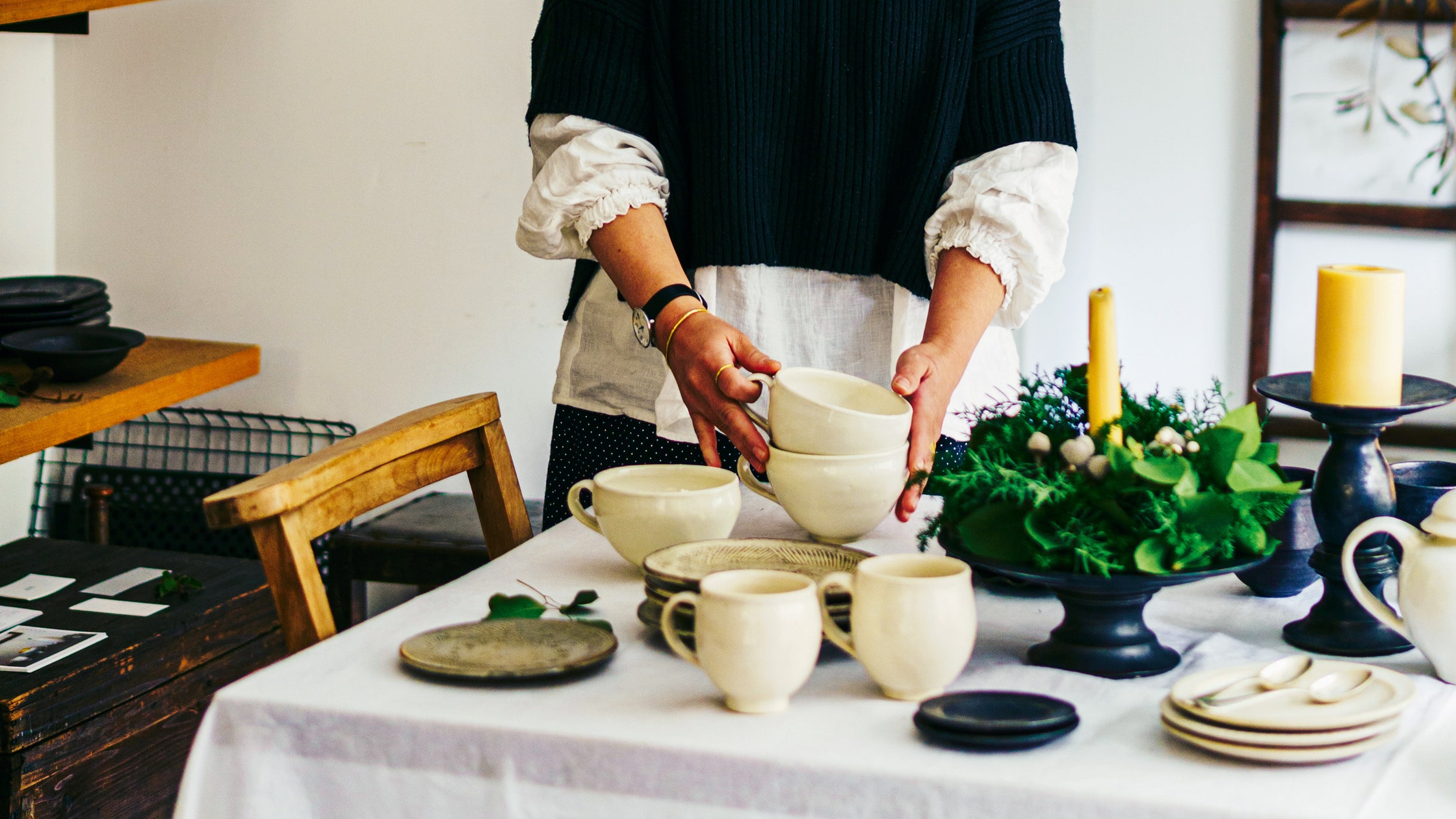Kanaami-Tsuji
Best for: Heritage Homewear
From his atelier at Kanaami-Tsuji near the Kodai-ji temple, tattoo-clad owner Toru Tsuji continues the kyo-kanaami metal-weaving techniques his ancestors have been practicing for three generations. Departing from the craft’s centuries-old traditions, he infuses his intricate designs with modern sensibilities, resulting in tofu servers, tortoise-pattern wire baskets, and bamboo-handled tea strainers that are as aesthetically pleasing as they are durable. Moreover, Naito Shoten, a traditional cleaning supplies store established in 1818, offers handmade shuro palm brooms and stiff-bristled scrubbers crafted from natural fibers sourced from artisans throughout Japan.
Hisoca
Best for: Ceramics
At Hisoca, a snug concept shop just west of the Imperial Palace, owner Kyoko Kawai selects primarily made-in-Japan ceramics, glassware, brass cutlery, and other dining room fixtures designed to uplift your spirit. Highlights on the wall-mounted shelves include earthen nabe pots (a Japanese hot pot with a lid), octagonal plates from Okayama, wooden trays from Osaka, and smoked-glass cups crafted by a local studio.
Good is Good
Best for: Rotating Exhibitions
The minimalist Good Is Good, founded by an artist couple—a painter and a sculptor—near the atelier-packed Kita-ku ward, serves as an art gallery, ceramics store, and teahouse. Rotating exhibitions featuring the owners’ works and their artistic friends dictate the store’s unique opening hours.
Saluk
Best for: Contemporary Designs
Craft gallery Saluk, located in a small village on the way to the forest-fringed Kurama-dera temple, showcases Kyushu-born owner Kanako Kai’s exquisite metalware crafted in her workshop at the back of the store. Among her contemporary designs are silver-laced chopstick rests and brass catchalls, but it’s the tin sake cups, renowned for their flavor-enhancing qualities, that many customers ultimately choose. Additionally, the shop features whimsical bowls and sculptures by Toyama-based glass artist Takaki Miyamoto, as well as earthy ceramics from Hokkaido and notebooks bound in reclaimed kimono fabrics.




